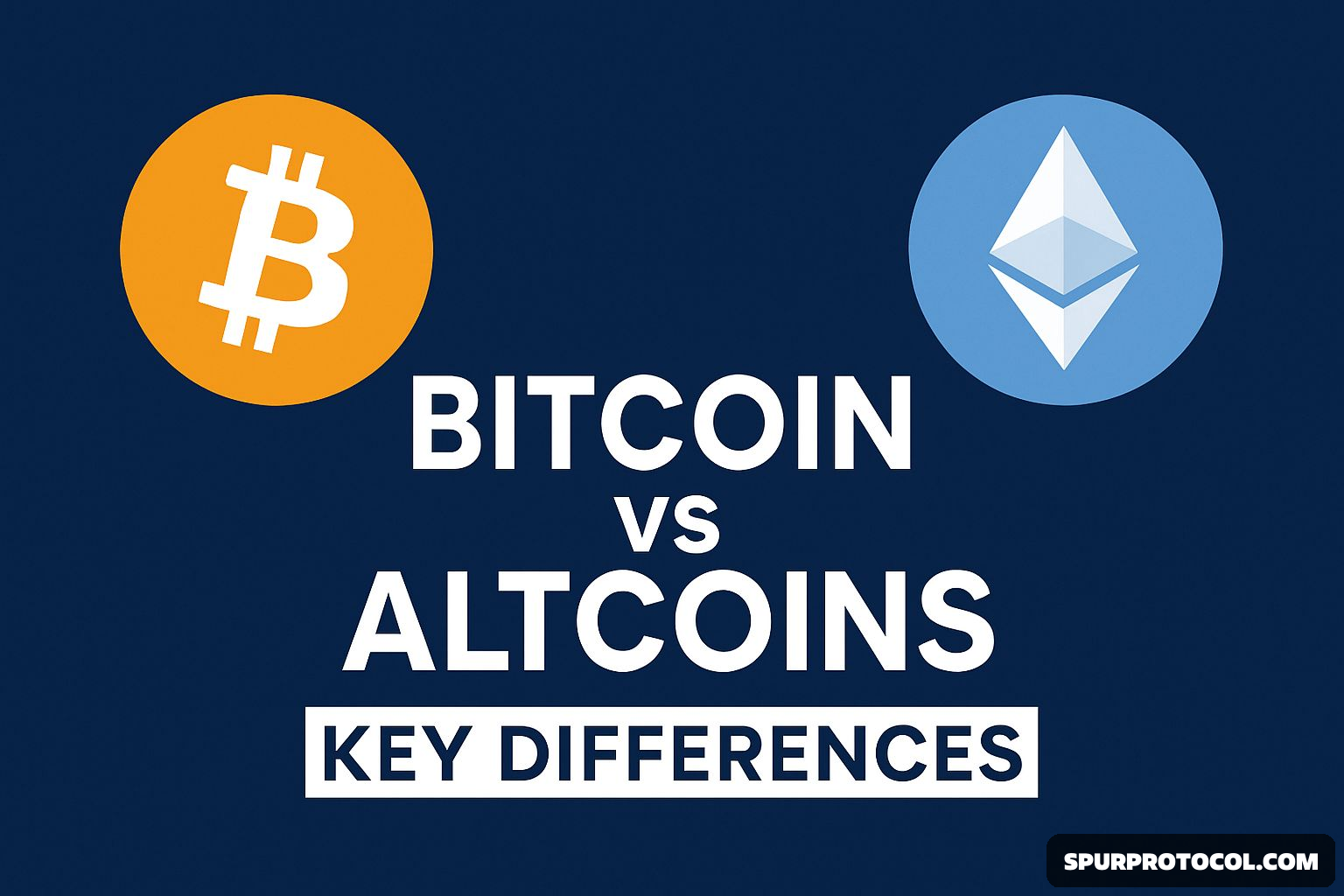Bitcoin Vs Altcoins: Key Differences
As cryptocurrency continues to grow in popularity, two major terms you’ll often hear are Bitcoin and Altcoins. While both fall under the umbrella of digital currencies, there are key differences between them that every beginner should understand.
Go Back

🕒 9:02 PM
📅 Aug 18, 2025
✍️ By theonlybrainard
1. What is Bitcoin?Bitcoin (BTC) is the first and most well-known cryptocurrency, created in 2009 by an anonymous figure known as Satoshi Nakamoto. It was designed as a decentralized digital currency to allow peer-to-peer transactions without the need for banks or intermediaries. Bitcoin is often referred to as “digital gold” due to its limited supply (21 million coins) and its role as a store of value.
2. What Are Altcoins?
Altcoins (short for “alternative coins”) refer to all other cryptocurrencies apart from Bitcoin. Some popular examples include Ethereum (ETH), Litecoin (LTC), Solana (SOL), and Ripple (XRP). These coins often serve different purposes and improve on Bitcoin’s limitations, such as speed, scalability, or added functionality.
3. Key Differences
While Bitcoin and Altcoins both function as digital currencies powered by blockchain technology, they differ significantly in origin, purpose, technology, and market behavior.
Bitcoin was the first-ever cryptocurrency, introduced in 2009 by a mysterious figure (or group) known as Satoshi Nakamoto. It emerged as a response to the global financial crisis, offering a decentralized alternative to traditional banking systems. Altcoins, on the other hand, refer to *all other cryptocurrencies that followed Bitcoin. The first set of altcoins appeared in the early 2010s, with Litecoin and Namecoin among the earliest. Each new altcoin aimed to improve upon Bitcoin or serve different functions in the digital economy.
Bitcoin was designed primarily as a digital alternative to money, focused on peer-to-peer transactions and long-term value storage. Altcoins, however, vary greatly in their purpose. For instance, Ethereum introduced smart contracts, allowing developers to build decentralized applications (dApps). Other altcoins focus on faster transactions (e.g., Litecoin), enhanced privacy (e.g., Monero, Zcash), or specialized utility within ecosystems (e.g., Chainlink or Filecoin). While Bitcoin remains a financial asset, many altcoins serve broader technological and financial roles.
Bitcoin’s blockchain is known for being secure, simple, and stable, but it lacks flexibility. Most altcoins are built on more advanced or customizable blockchains. Ethereum, for example, introduced a programmable blockchain that supports decentralized apps, tokens, and financial services. Some altcoins use entirely different consensus mechanisms (like Proof of Stake or Delegated Proof of Stake) to achieve greater scalability and efficiency compared to Bitcoin’s Proof of Work system.
Bitcoin was designed primarily as a digital alternative to money, focused on peer-to-peer transactions and long-term value storage. Altcoins, however, vary greatly in their purpose. For instance, Ethereum introduced smart contracts, allowing developers to build decentralized applications (dApps). Other altcoins focus on faster transactions (e.g., Litecoin), enhanced privacy (e.g., Monero, Zcash), or specialized utility within ecosystems (e.g., Chainlink or Filecoin). While Bitcoin remains a financial asset, many altcoins serve broader technological and financial roles.
Bitcoin’s blockchain is known for being secure, simple, and stable, but it lacks flexibility. Most altcoins are built on more advanced or customizable blockchains. Ethereum, for example, introduced a programmable blockchain that supports decentralized apps, tokens, and financial services. Some altcoins use entirely different consensus mechanisms (like Proof of Stake or Delegated Proof of Stake) to achieve greater scalability and efficiency compared to Bitcoin’s Proof of Work system.
